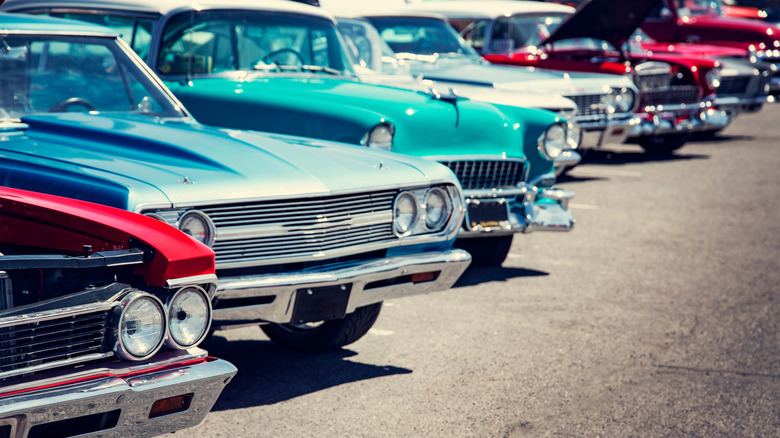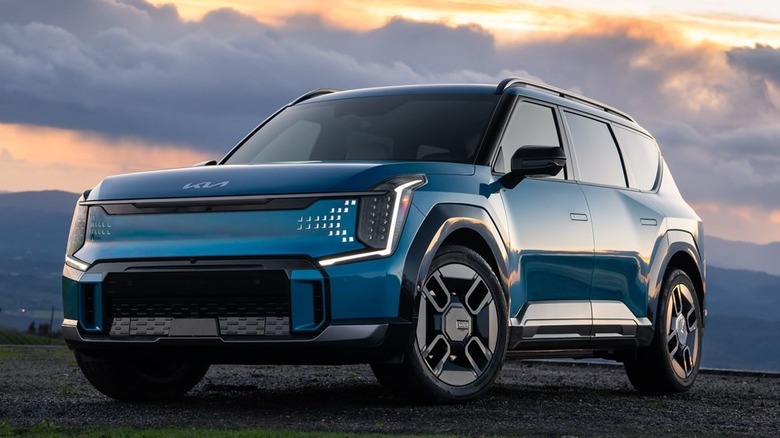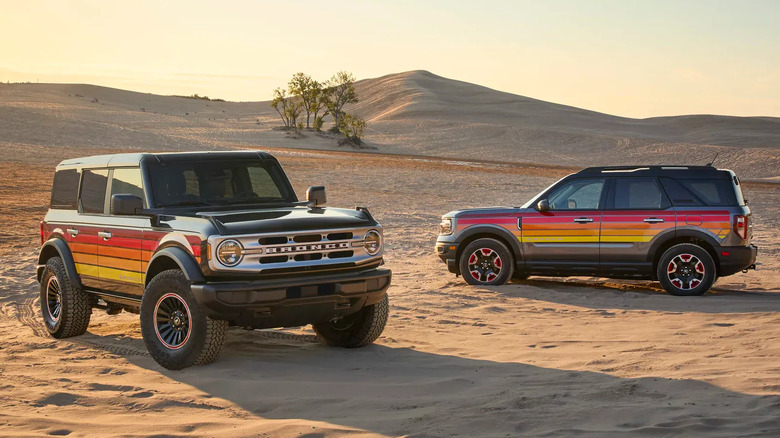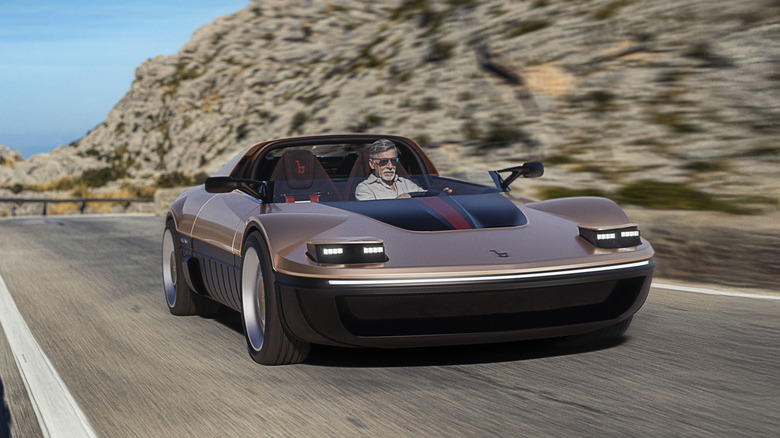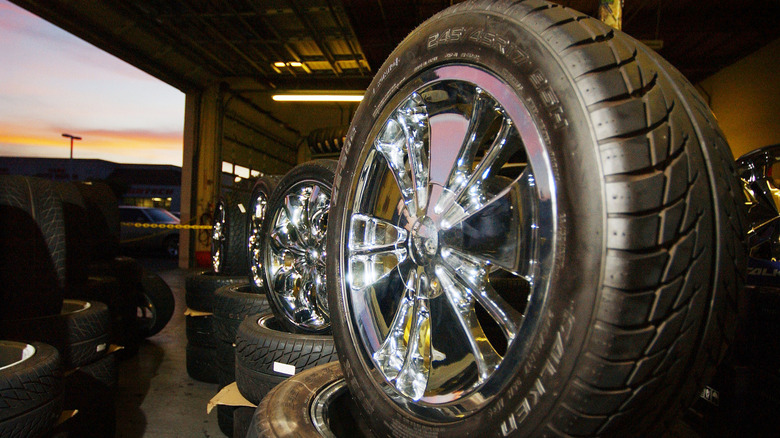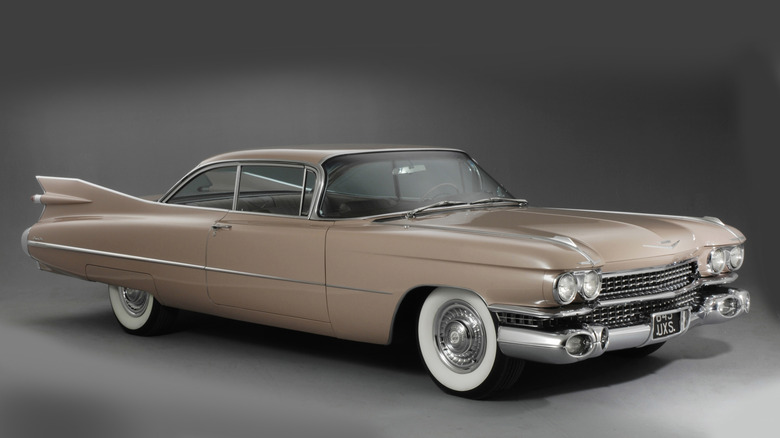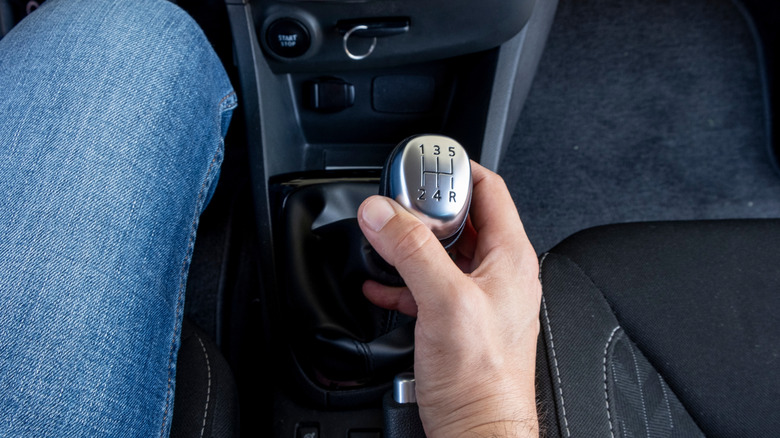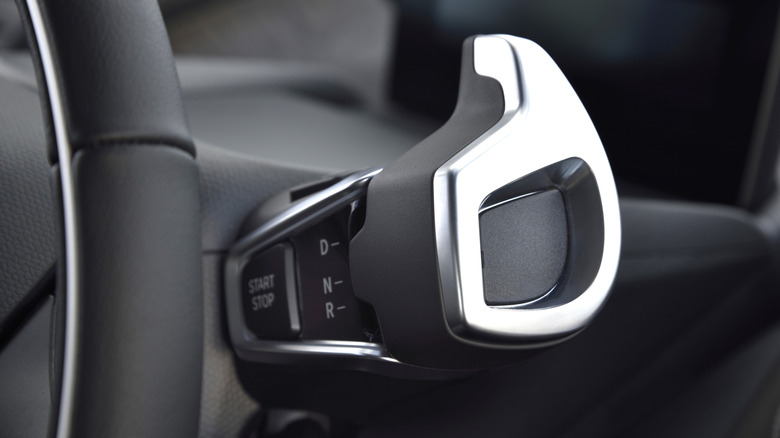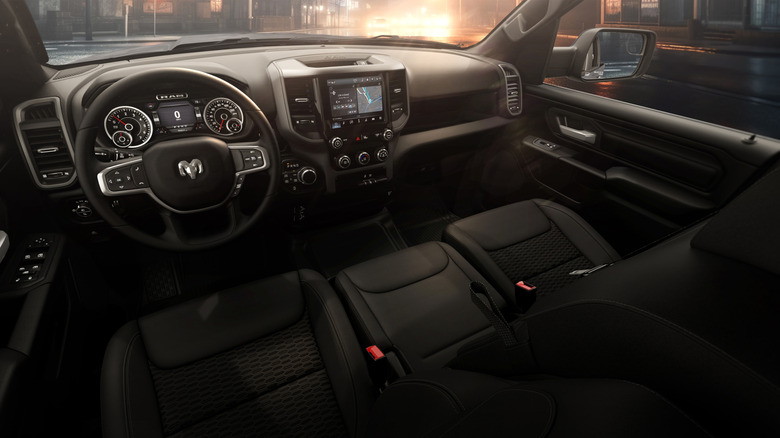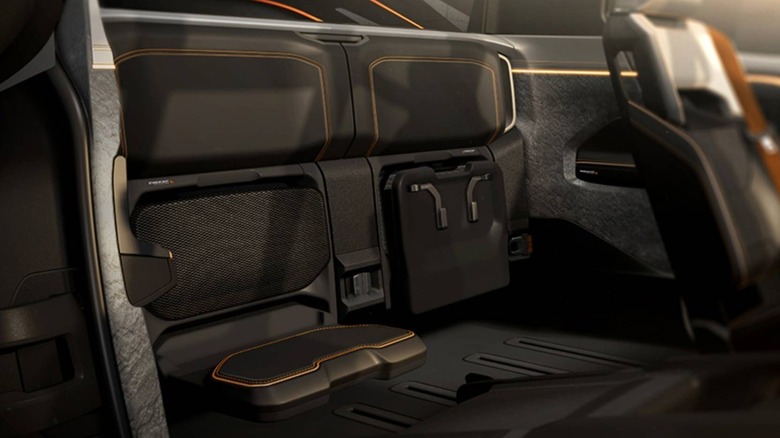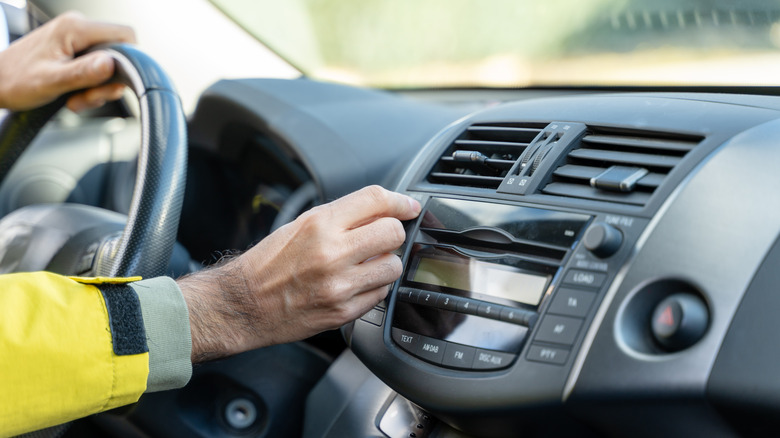12 Classic Car Features That Are Making A Comeback
Fashion has long mastered the art of the comeback — bell-bottoms, platform shoes, you name it. Now, it's the car world's turn. Automotive design is having its own retro moment, and it's not creeping in quietly. It's peeling out, blasting old-school tunes, and making no apologies. The charm, the quirks, the little design choices that once gave cars their personality? They're back, and stealing the show.
Walk through any auto show today, and you'll spot the signs everywhere. Car companies are dusting off ideas they tossed aside years ago, from boxy shapes and round lights to analog buttons and bench seats. The aftermarket world is getting in on it, too, turning garages into time machines where classic meets cutting-edge. Sometimes it looks like a full revolt against cookie-cutter car design, and it's about time. Feeling nostalgic yet? You will. Let's take a joyride through 12 classic car features making a well-deserved comeback.
Boxy styling
Remember when vans and SUVs looked like they were carved from solid blocks of steel? Those sharp, angular lines that made no apologies for wind resistance? Well, grab your protractor because boxy is back, baby. The sleek, wind-tunnel-tested curves are getting shouldered aside by vehicles that look like they mean business. Take Kia's new EV9 off-roader concept. It's basically a rolling geometric statement that says, "I'm here, I'm square, get used to it."
Boxy vehicles project confidence. They look tough, capable, and a little rebellious, like they have somewhere important to be and don't need your approval to get there. But this isn't just a throwback for throwback's sake. There's real function behind the form. Boxier designs often mean bigger windows for better visibility and more interior space for people, pets, and all their stuff. But if nothing else, it's a welcome departure from the same-same jellybean shapes of modern cars.
Round headlights
Angular headlights with razor-thin LED strips? No, thank you. Round headlights? Now we're talking. This kind of headlight is simple, symmetrical, and it instantly makes a car look friendlier, and sometimes a little mischievous. It's like the automotive version of big puppy-dog eyes, and it totally works. That's probably why round headlights were a staple from the '50s through the '80s, lighting up everything from muscle cars to off-roaders.
Then, the '90s happened, sending round headlights packing like last season's fashion. But guess what? Simple never really goes out of style; it just takes a breather. And now round headlights are back, thanks in part to the revival of the Ford Bronco. The Toyota Land Cruiser 1958 Edition proudly sports them, too, paying homage to its distant off-road ancestor, the FJ25. And what about Mini? Well, the British brand never abandoned them in the first place, just patiently waited for the trend to come back around. And of course it did, because for some users, round and friendly beats angry squinting headlights every time.
Pop-up headlights
Is there anything more exciting than flipping a switch and watching a car's headlights magically appear? Probably not. One second, your car looks smooth and mysterious, the next, it's wide-eyed and ready for action. It's no wonder that the '80s and '90s went absolutely bonkers for these things. The sporty Acura Integra had them, and the Mazda Miatas could literally wink at you. And wild supercars like the Ferrari F40 and Lamborghini Countach looked like angry robots preparing for battle. By this point, you might have noticed that all the coolest cars with pop-up headlights are quite old.
Why don't new cars have pop-up headlights? As it turns out, awesome mechanical headlights aren't always safe for pedestrians. Safety laws introduced in the EU around 2004 made it very difficult for manufacturers to include them in their new designs. When the final C5 Corvette rolled off the assembly line in 2004, those iconic pop-ups went with it. However — are you ready for a plot twist? — pop-up headlights are staging a sneaky comeback. Bertone's cooking up a new open-top runabout with full pop-ups, though it's only making 25 units for the time being. Ferrari's playing it safe with their Daytona SP3, featuring flip-up covers over its headlights. It's not quite the real deal, but still pretty neat.
Cornering lamps
Did you ever take a sharp turn on a dark street and feel like you're steering straight into the abyss? You should've never had to deal with such horrors, because the solution has been right here all along. It's the cornering lamp, first announced by Cadillac way back in 1962. These handy little lights kicked on when you hit the turn signal, lighting up the path around every twist and turn. So, why have you been left in the dark all these years? You can probably blame the bean counters. The law doesn't require these lamps, so they're easy to axe when looking for ways to save a few bucks.
But things might be starting to change. Cornering lamps are making a stylish comeback on Jeep Grand Cherokees, BMW X3s, and many more. And no, they're not the same thing as adaptive headlights. The latter pivot the main beams, while cornering lamps direct light exactly where you need it. Porsche's taking things one step further with their HD Matrix headlights, which can light up corners, switch between high and low positions to avoid blinding other drivers, and project animations onto the road as "greetings and send-offs". Not very retro, but certainly interesting.
Two-tone paint jobs
Once upon a time, gorgeous two-tone paint jobs ruled the road, with creamy tops, bold bottoms, and flashy chrome trim splitting the difference. It was the automotive equivalent of dressing to impress, and it looked good. Somewhere along the way, though, all that personality got replaced by pearl white and shades of gray. But of course, people missed cars with attitude, opening the doors for the return of dual-tone style.
Fittingly, the revival isn't subtle. The 2025 Toyota RAV4 Hybrid XSE rocks a contrast roof like it's 1983, while the all-electric Volkswagen ID. Buzz cranks the nostalgia to 11 with its candy-colored two-tone schemes. Even Bentley happily slaps contrasting hues on its full lineup of six-figure cruisers. And why not? Few design tricks scream "premium" quite like a perfectly executed color split. That doesn't mean the grayscale era is over yet, but our roads are about to look a lot more colorful.
Chrome wheels
For years, chrome rims were the ultimate flex. The shinier, the better. Then, matte black and gunmetal gray arrived, and the entire wheel world went dark, literally. Chrome was suddenly out, labeled as too flashy, too extra, too "early-2000s energy." Subtle was in, and anything with a mirror finish was out. It was all about stealth mode, not standout style.
However, trends have a funny way of circling back, especially the bold ones. Chrome, for one, is polishing up for a full-blown comeback, but you won't see them on the showroom floor anytime soon. Instead, they're taking over the aftermarket scene. Custom builders, wheel shops, and drivers with a flair for flash have banded together to bring back the bling. It's not just for show cars, either. Think lifted trucks, daily drivers, and even EVs with serious main character energy.
Whitewall tires
Once the crown jewel of curb appeal, the now forgotten whitewall tires were the finishing touch that said, "Yes, I do care how my car looks, thank you very much." From Cadillacs to convertibles, they made Sunday cruisers look like rolling tuxedos. But like many icons, they eventually got pushed aside. Performance took priority. Sportiness meant black sidewalls. And automakers decided that "luxury" meant minimalism.
Minimalism will have to take a back seat, because whitewalls are having their moment again. They're not just for period-correct restorations anymore, either. Rolls-Royce is leading the charge with the Boracay Blue Ghost, pairing a punchy blue finish with dainty whitewall tires. Sure, they're not the wide bands of the glory days, but it's a fashionable first step. With the Ghost setting the bar, rivals can either cling to minimalist designs or step up and show they've still got style.
Manual transmissions
For a hot minute, it looked like stick shifts were going extinct. Automatics could shift faster, smoother, and didn't come with the learning curve of a manual transmission. Carmakers called it progress, but enthusiasts called it boring. As it turns out, raw speed isn't everything. There's an irreplaceable joy in nailing that perfect rev-matched downshift and feeling the mechanical connection between engine and wheels. Some might call this "driving", as opposed to the monotonous point-and-shoot process of piloting an automatic car.
Evidently, the pushback was real, since manufacturers began to listen. The Toyota GR Supra launched as automatic only, then went manual after customers made it clear they wanted to row their own gears. Acura followed suit with the new Integra, ending a five-year manual dry spell. Ford handed Bronco fans a clutch pedal to go with their trail maps. And finally, Ferrari. After a decade of flappy paddles, the Prancing Horse is dipping a toe back in the analog pool. Their ultra-limited Icona lineup is reintroducing the gated manual shifter, proof that even the fastest cars on earth can slow down for the right reasons.
Column shifters
If you're going to have an automatic gearbox, why let the shifter hog all that space? Isn't there a smarter way? Yes, in fact, there was: the humble column shifter. Tucked neatly behind the steering wheel, these shifters put controls within easy reach while keeping your center console free for important things, like Big Gulps and emergency taco storage. Then, everything changed: space-saving column shifters out, chunky console shifters in. Why? Who knows.
But that wasn't the last the world would see of column shifters. The now-discontinued BMW i3 brought them back during its electric adventure. The 2024 Hyundai Santa Fe is a more recent example of the same design philosophy. In an interview with The Drive, vice president of design SangYup Lee said highlighted how by "having shifting by wire on the column, we've freed up lots of space over here on the console area." It's a small move with big benefits: easier reach, smarter use of space, and fewer excuses for a cluttered console. Plus, with all that newfound space, there's only one logical next step ... bring back the bench seat, too.
Bench seats
It might be hard to believe, but front seats weren't always individual thrones; They were full-on couches on wheels. Bench seats were wide, soft, and perfect for scooting over to sit close to someone special (or just fitting one more kid on the way to soccer practice). From classic sedans to trusty pickups, they were everywhere. But as cars go more safety-focused, benches got booted in favor of bucket seats, consoles, and a whole lot of personal space.
Luckily, not everyone's over bench seats. The 2025 Ram 1500 Warlock is bringing the bench seat back, and it looks slicker than ever. This isn't your granddad's old vinyl slab, either. It's a modern 40/20/40 split set up, with plush cushions and smart functionality baked right in. Need extra seating? Pop the middle section up and ride three across like it's 1976. Craving more comfort and convenience? Fold it down for a built-in armrest, cupholders, and bonus storage. It's retro in spirit, but completely modern where it counts.
Jump seats
Jump seats are automotive problem-solving at its scrappiest. They're the "We'll make it work somehow" solution when you've got more people than proper seats. More often than not, you didn't ride in a jump seat by choice. You got tossed back there with a sibling, a snack, and a warning not to move. Simpler times. Now, Ram is giving that old-school idea a futuristic upgrade.
In the upcoming Ram 1500 REV electric truck, a new patent shows off removable third-row jump seating. This new concept would swap static seats for versatility. You get extra seating when you need it, empty space when you don't, and the option to turn your truck bed into a small lounge when parked. The patent timing suggests Ram isn't just dreaming of the possibilities, but might be planning to build this thing, even if it skips the first-generation truck. And who knows, if this actually hits production, everyone else might wish they had thought of it first.
Physical buttons
The most anticipated comeback isn't pop-up headlights, chrome, or jump seats; it's buttons. Yep, good old-fashioned buttons. For a while, automakers went full touchscreen on everything. Want to change the A/C or turn up the music? Better tap your way through five menus and hope for the best. It looked cool, sure, but using it? Not so much. Unsurprisingly, drivers got fed up, and are about to change.
Volkswagen publicly admitted that they overdid it and is now bringing back real buttons in all its vehicles. Goodbye, horrible touch-capacitive controls. Hyundai's also rethinking things, slipping more physical controls back into new models after drivers politely (and not-so-politely) said, "No, thanks" to endless tapping. Even Porsche leaned into the comeback. When designing the latest Cayenne, they ditched the touchscreen madness for real dials you can actually find (and use) without looking. It's a win for common sense — and for anyone who's ever tried to adjust the fan speed while driving on the freeway.
